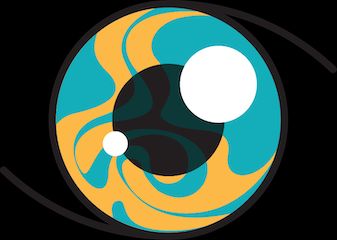Jaundice is categorized into three types, depending on whether it is caused by issues with breaking down blood cells, filtering blood, or draining waste from the blood.
Jaundice is a serious medical condition that makes your skin and the whites of your eyes look yellowish. This happens when too much bilirubin builds up in your blood.
Bilirubin is a yellowish pigment created as hemoglobin — a component of red blood cells — is broken down.
Normally, bilirubin is delivered from the bloodstream into your liver. Then, it passes through tubes called bile ducts. These ducts carry a substance called bile into your small intestine. Eventually, bilirubin is passed out of your body through urine or stool.
Types of jaundice are categorized by where they happen within the liver’s process of taking in and filtering out bilirubin. They
- Pre-hepatic jaundice: Health conditions that affect the blood’s rate of breaking down blood cells cause bilirubin to overflow into bodily tissues. It occurs before the blood reaches the liver.
- Hepatic jaundice: Hepatic jaundice happens when your liver tissue becomes less effective at filtering out bilirubin from your blood.
- Post-hepatic jaundice: This type of jaundice happens when bilirubin filtered from the blood can’t drain properly into the bile ducts or digestive tract to be passed out of the body. It occurs after bilirubin is filtered out in the liver and occurs because of a blockage.
Pre-hepatic jaundice is caused by conditions that raise your blood’s rate of hemolysis. This is the process through which red blood cells are broken down, converting hemoglobin to bilirubin.
Because the liver can only process so much bilirubin at once, bilirubin overflows into bodily tissues, resulting in jaundice.
Causes of pre-hepatic jaundice
Having certain conditions that affect how your red blood cells are broken down may lead to jaundice.
Common causes of pre-hepatic jaundice
- malaria, a blood infection caused by a parasite
- sickle cell anemia, a genetic condition in which red blood cells become crescent-shaped rather than the typical disc shape
- spherocytosis, a genetic condition of the red blood cell membrane that causes them to be sphere-shaped rather than disc-shaped
- thalassemia, a genetic condition that causes your body to make an irregular type of hemoglobin that limits the number of healthy red blood cells in your bloodstream
Symptoms of pre-hepatic jaundice
You may have symptoms in addition to the yellowing skin and eyes associated with jaundice.
Common symptoms of pre-hepatic jaundice include:
- abdominal pain
- fever, including chills or cold sweats
- abnormal weight loss
- feeling itchy
- dark urine or pale stool
Pre-hepatic jaundice risk factors
Some factors may increase your risk for developing for this type of jaundice. They may include:
- drug use
- having a family member with a blood disorder
- traveling to regions where malaria is endemic
Diagnosis of pre-hepatic jaundice
To diagnose pre-hepatic jaundice, a doctor will likely order tests to determine your liver function and measure bilirubin.
- a urinalysis to measure the amount of certain substances in your urine
- blood tests, such as a complete blood count (CBC) or liver function tests to measure bilirubin and other substances in the blood
- imaging tests, such as an MRI or ultrasound, to examine your liver, gallbladder, and bile ducts to rule out other forms of jaundice
- a HIDA scan to help find blockages or other issues in the liver, gallbladder, bile ducts, and small intestine
A doctor may diagnose you with pre-hepatic jaundice if you have jaundice and there aren’t any issues with bilirubin being processed by your liver or within the gallbladder and biliary ducts.
Treatment for pre-hepatic jaundice
Treatment for this type of jaundice involves treating the condition that is causing it. The treatment options will vary by condition.
Treatment for pre-hepatic jaundice may include:
For malaria:
- medications to help destroy the parasite and prevent parasites from reinfecting your liver again
For sickle cell anemia:
- blood transfusions from a healthy donor
- rehydrating with intravenous (IV) fluid
- medications for any infections that can cause a sickle cell crisis
For spherocytosis:
- folic acid supplements
- blood transfusions for anemia
- spleen removal surgery to help increase red blood cell life and lower the chance of gallstones
For thalassemia:
- blood transfusions
- bone marrow transplants
- spleen or gallbladder removal surgery
Hepatic jaundice happens when your liver tissue is scarred (known as cirrhosis), damaged, or dysfunctional. This makes it less effective at filtering out bilirubin from your blood.
Since it can’t be filtered into your digestive system for removal, bilirubin builds up to high levels in your blood.
Causes of hepatic jaundice
Hepatic jaundice occurs when the liver becomes less effective at removing bilirubin from the blood. This can occur if you have liver damage or conditions that affect liver function.
- liver cirrhosis, which means that liver tissues are scarred by long-term exposure to infections or toxic substances, such as high levels of alcohol
- viral hepatitis, an inflammation of the liver caused by one of several viruses that can get into your body through infected food, water, blood, stool, or sexual contact
- primary biliary cirrhosis, which happens when bile ducts are damaged and can’t process bile, causing it to build up in your liver and damage liver tissue
- alcoholic hepatitis, in which your liver tissues are scarred by the heavy, long-term drinking of alcohol
- leptospirosis, a bacterial infection that can be spread by infected animals or infected animal urine or feces
- liver cancer, in which cancerous cells develop and multiply within liver tissues
Hepatic jaundice symptoms
You may experience other symptoms in addition to the yellowing of the eyes and skin.
Symptoms of hepatic jaundice can include:
- loss of appetite
- bloody nose
- skin itching
- weakness
- abnormal weight loss
- swelling of your abdomen or legs
- dark urine or pale stool
- pain in your muscles or joints
- darkening skin
- fever
- feeling sick
- throwing up
Hepatic jaundice risk factors
If you experience liver damage, you may be at risk of developing hepatic jaundice.
Risk factors for this type of jaundice can include:
- drug use
- drinking a lot of alcohol over a sustained period of time
- use of medications that can cause liver damage, such as acetaminophen or certain heart medications
- previous infections that affected your liver
Hepatic jaundice diagnosis
To diagnose hepatic jaundice, a doctor will likely order the following tests:
- a urinalysis to measure levels of substances in your urine related to your liver function
- blood tests, such as a complete blood count (CBC) and antibody tests, or liver function tests to measure bilirubin in the blood and levels of substances that indicate that your liver may not be processing bilirubin properly
- imaging tests, such as an MRI or ultrasound, to examine your liver for damage or for the presence of cancerous cells
- an endoscopy, which involves inserting a thin, lighted tube into a small incision to look at your liver and take a tissue sample (biopsy) if necessary for analysis for cancer or other conditions
A doctor will likely diagnose you with hepatic jaundice if they notice liver tissue damage on an imaging test result or see abnormal levels of certain liver substances, such as albumin, or antibodies that suggest infections or liver cancer.
Hepatic jaundice treatment
Treatment for hepatic jaundice involves treating its cause. Treatment may vary depending on the condition.
In some instances, following a diet for jaundice may help.
For liver cirrhosis:
- quitting drinking
- beta-blockers
- intravenous (IV) antibiotics
- a low protein diet
For viral hepatitis:
- antiviral medications
- hepatitis vaccination
- plenty of rest and fluids
For primary biliary cirrhosis:
- bile acids to help with digestion
- bile-lowering medication
- antihistamines like diphenhydramine (Benadryl) for itching
For alcoholic hepatitis:
- quitting alcohol
- nutrition supplements
- liver transplant, in severe cases
For leptospirosis:
- antibiotics for infection
- ventilator for breathing trouble
- dialysis for kidney damage
For liver cancer:
- chemotherapy or radiation to kill cancer cells
- partial liver resection
- liver transplant
Post-hepatic, or obstructive jaundice, happens when bilirubin can’t be drained properly into the bile ducts or digestive tract because of a blockage.
Causes of post-hepatic jaundice
Causes of post-hepatic jaundice
- gallstones, hard calcium deposits in the gallbladder that can block bile ducts
- pancreatic cancer, the development and spread of cancer cells in the pancreas, an organ that helps produce digestive substances
- bile duct cancer, the development and spread of cancer cells in your bile ducts
- pancreatitis, an inflammation or infection of your pancreas
biliary atresia , a genetic condition in which you have narrow or missing bile ducts
Symptoms of post-hepatic jaundice
If you have post-hepatic, your may experience symptoms in addition to the yellowing of your eyes and skin.
These symptoms
- feeling sick
- throwing up
- dark urine or pale stool
- abdominal pain
- diarrhea
- abnormal weight loss
- skin itching
- abdominal swelling
- fever
Post-hepatic jaundice risk factors
Certain factors may make you more likely to develop obstructions that can lead to post-hepatic jaundice.
These risk factors may include:
- being overweight
- eating a high fat, low fiber diet
- having diabetes mellitus
- having a family history of gallstones
- being female
- aging
- smoking tobacco products
- drinking a lot of alcohol
- having a previous pancreas inflammation or infection
- being exposed to industrial chemicals
Diagnosis of post-hepatic jaundice
To diagnose post-hepatic jaundice, a doctor will likely order tests to determine if there is a blockage and where.
These tests may include:
- a urinalysis to measure levels of substances in your urine
- blood tests, such as a complete blood count (CBC) and antibody tests for cancer, or liver function tests to rule out hepatic jaundice
- imaging tests, such as an MRI, ultrasound, or HIDA scan, to examine your liver, gallbladder, and bile ducts for obstructions like gallstones or tumors
- an endoscopy, which involves inserting a thin, lighted tube down the esophagus to look at your liver, gallbladder, or bile ducts and take a tissue sample if necessary for analysis for cancer or other conditions
If the doctor sees blood work along with imaging that may indicate an obstruction, they’ll likely diagnose your jaundice as post-hepatic.
Post-hepatic jaundice treatment
Treatment for post-hepatic jaundice will address the cause.
For gallstones:
- changing your diet to stop producing gallstones
- removing gallstones or your gallbladder entirely
- taking medications or treatments to dissolve gallstones
For pancreatic cancer:
- surgery to remove cancerous tissue or your whole pancreas
- radiation or chemotherapy to destroy cancer cells
For bile duct cancer:
- surgery to remove bile ducts and parts of your liver and pancreas
- radiation or chemotherapy to destroy cancer cells
- liver transplant
For pancreatitis:
- rest
- intravenous (IV) fluids or pain medication
- surgery to remove any causes of inflammation (like gallstones)
For biliary atresia:
- the Kasai procedure to remove and replace ducts
- liver transplant
Neonatal jaundice is a type of jaundice that happens to newborn babies.
Most babies are born with a lot of red blood cells. Because the liver isn’t fully developed yet, bilirubin can’t be processed quickly. As a result, a newborn may experience jaundice symptoms a few days after they’re born.
Neonatal jaundice types
Doctors classify neonatal jaundice according to its cause.
Types of neonatal jaundice
- Physiological: This happens because the liver isn’t fully formed yet.
- Prematurity: This results from a baby being born too early and being unable to poop out bilirubin properly.
- Breastfeeding: Breast milk jaundice occurs from a baby having trouble breastfeeding or not getting
enough breast milk . - Incompatible blood type: This results from a baby and their birthing parent having different blood types, which can cause the mother to make antibodies that break down her baby’s red blood cells.
Neonatal jaundice symptoms
Neonatal jaundice isn’t usually a cause for concern.
But if bilirubin builds up to extremely high levels, a baby can experience brain damage (known as kernicterus) from bilirubin getting into brain tissue.
Seek emergency medical attention if you notice that your newborn has any of the following symptoms:
- long periods of high-pitched crying
- arching of their neck and back
- fever
- throwing up
- having trouble feeding
If you have jaundice, the outlook may depend on the cause.
Some causes of jaundice can be treated with a change in your diet or lifestyle, but others may need immediate surgery or long-term treatment.
Jaundice means that there’s too much bilirubin in your blood, but the underlying cause can vary widely.
Doctors diagnose jaundice based on whether your body has trouble breaking down blood cells, filtering blood in the liver, or draining waste from the blood.
See a doctor right away if you notice yellowing of your skin or the whites of your eyes. If you experience other concerning or severe symptoms, you may need emergency medical attention. Some causes of jaundice can be life threatening.









